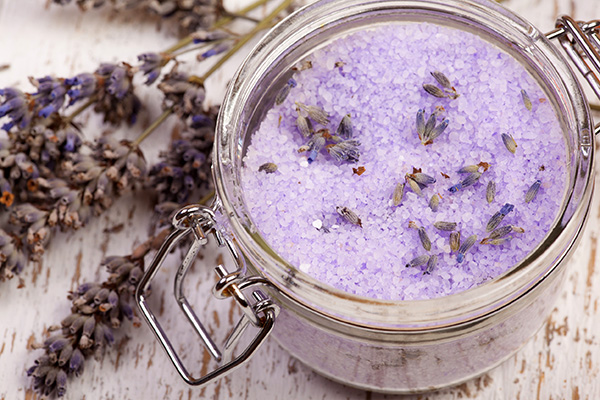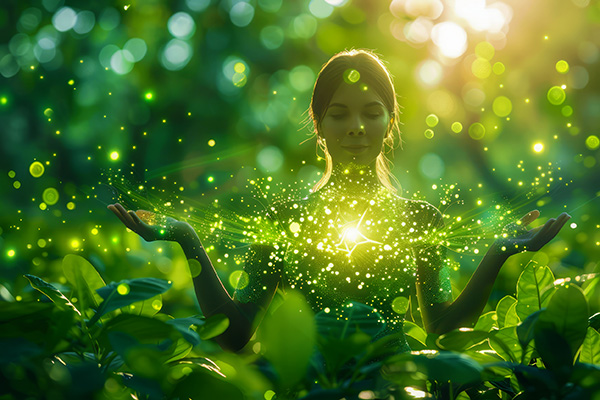holistic health
Spiritual Awakening ‘Turns On The Light’
 What exactly is a spiritual awakening, and is there a way you can tell if you are having one? Here are some ways to be aware of what is happening to you.
What exactly is a spiritual awakening, and is there a way you can tell if you are having one? Here are some ways to be aware of what is happening to you.
The first sign is usually when you are no longer living in a ‘dream world,’ where you used to see everything through your human ego and you were overly focused on the future and your past.
This is a clear sign that you are becoming more spiritually aware. You have a greater awareness of your individual self and the connection between that and everything else. Things start to come into better focus in your life and make more sense.
When you closely examine various religions and faith traditions, there is usually a common thread that describes this state of heightened awareness as nirvana, enlightenment, or awakening.
This new consciousness happens when you stop being the observer, and instead ask yourself, who is observing?
Many people go through life on ‘autopilot,’ because that is what they were taught, or they simply fell into a routine without giving much thought to who they really are, or what they truly need or desire to make their life meaningful.
Asking such questions about yourself is important for your personal growth and self-realization. It is ‘turning the light on’ so to speak. The first step in growth is always the awareness of the present moment followed by an impulse to change something. Continue reading
Remember To Wear Your Protection Daily
 Many of my clients complain feeling drained by people around them. These energy thieves can be found in their work environment, and among friends or family. In turn, what affects them energetically, also affects their pets.
Many of my clients complain feeling drained by people around them. These energy thieves can be found in their work environment, and among friends or family. In turn, what affects them energetically, also affects their pets.
Only yesterday, I was driving one of our local veterinarians back to her practice in town. I had brought her out to our place in the country to check our latest rescue dog; he is still too nervous to get into the car.
She then started telling me, with no prompting from me, how her customers are draining her. She feels that her animal patients are profoundly affected by their owners’ moods. The vet said she takes a few days off intermittently to recharge her batteries – not from the work she loves, but from the pet owners!
When I saw psychic medium John Edward perform live, he was stressing how important it is to wear our energy or psychic protection. “Wear it like a condom,” he said. I have since adopted this motto as my own, because it really nails the importance of wearing protection from negative energies around you.
We dress according to climate changes, and so, we must also wear the appropriate psychic protection for our own inner ‘climatic changes.’
We are all vulnerable to external energy vibrations, but at times this threat intensifies. We are especially more open to taking on external ‘stuff’ when we are anxious, tired, going through personal changes, and when are under the influence of any mind-altering substance.
The Great Awakening: You Were Born for This Moment!
 The shift is constantly rising. The veil continues to lift. Some feel it more than others. We are living in a very different energy frequency today, compared to a decade or two ago.
The shift is constantly rising. The veil continues to lift. Some feel it more than others. We are living in a very different energy frequency today, compared to a decade or two ago.
These are the days you want to walk with caution and discernment, and there are many different tools you can use to get in tune with your higher self and experience some of these wonderful things.
You can now increasingly see and feel things before they happen, you can experience wonderful things, but you must be living with your heart and mind open to connect with others and live with clarity and lightness of being.
There are things you can do to raise your vibration to match the global awakening, just as there are things you can do to lower your vibration. Unconditional love, and keeping your heart and mind open, raises and connects you to others who are on the same path as yourself.
You can connect with other light beings and enlightened souls by being positive, as well as through meditation, prayer and listening to uplifting music. Some of my favorite music is classical and Indian mediation music. I find it heightens my frequency a lot.
Become a part of the great awakening, the wonderful age that we are living in right now. You don’t want to live with blinkers on, you want to be alert and know who your companions are and make sure they are not sucking the life out of you. You want to surround yourself with positive, spiritually aware people.
Heal Your Home With The Power Of Water And Air
 Your home is your refuge. It is where you re-charge your energy like a battery. It is so important to make it a sacred, safe, healing place for you and your family.
Your home is your refuge. It is where you re-charge your energy like a battery. It is so important to make it a sacred, safe, healing place for you and your family.
When your home’s energy is aligned, you feel more peaceful, more vital, more connected, and you open the door to prosperity, abundance, and well-being.
It always surprises me how many people forget to include spiritual principles and metaphysical resources in their approach to home care. People work to keep their homes clean, pay all their utility bills on time, install fences and security systems, and make sure everyone inside is well-fed and hopefully happy.
But few consider that the home protection and harmony doesn’t come from physical maintenance alone. It comes from energy.
Your home’s energy field needs just as much attention as its walls, pipes, roof, and locks. And yet, few people take proactive steps to cleanse, harmonize, and elevate the energetic well-being of the space they live in every day. It’s not just about how your home looks or functions, it’s also about how it ‘feels and flows,’ and how it supports the energy of everyone inside.
Most often it is water and air, the simplest elements of our living space, that that go unattended, and over time this quietly erodes our physical, mental and spiritual health and well-being.
Finding More Balance In A Busy World
 Do you ever feel the busier you become, the harder it is to remain focused and stay in control of everything? Then you are not, I promise you, alone! Sometimes life can seem like you are always juggling and struggling, but not always winning as a result.
Do you ever feel the busier you become, the harder it is to remain focused and stay in control of everything? Then you are not, I promise you, alone! Sometimes life can seem like you are always juggling and struggling, but not always winning as a result.
As a professional psychic, I have always been of the opinion that if we want something to manifest in the material world, we have to get the inside of ourselves, as well as our lifestyles, balanced and more harmonious first. Otherwise, we would simply attract more chaos.
By putting ourselves in a healthy, positive, and balanced place, we not only draw more abundance to ourselves, but we also achieve a less stressful lifestyle as a result.
This is not just spiritual philosophy; it’s energetic truth. The Universe is always responding to the vibration we emit. When we’re frantic, overextended, or emotionally scattered, we become magnets for more of the same.
But when we take steps to ground ourselves, reconnect with our inner guidance, and honor our natural rhythms, something beautiful happens: the energy around us begins to shift.
This shift isn’t just internal because others begin to notice it too. Opportunities feel more aligned, relationships grow more authentic, and daily life feels less like a struggle and more like a sacred flow. In essence, when we become energetically clear, we create space for the Universe to meet us halfway. That’s where true transformation begins. Continue reading
The Powerful Properties Of Lavender And Sea Salt
 If you’re looking for natural, organic ingredients to purify, cleanse and detoxify yourself and your space, there’s no better choice than lavender and sea salt.
If you’re looking for natural, organic ingredients to purify, cleanse and detoxify yourself and your space, there’s no better choice than lavender and sea salt.
These two ingredients are relatively inexpensive and easily found. You can even make potpourri or enjoy a relaxing bath with homemade salts without breaking the bank.
Depending on your preference, and its intended use, you may wish to obtain your lavender in crushed or essential oil form. Either can be found at an esoteric or herbal shop.
In crushed (flower) form, lavender is well-known for its aromatic quality and can be mixed with another floral scent if preferred. Lavender is also famous for its autoimmune properties and ability to stimulate mental clarity, including psychic ability.
If you like the scent of lavender, as so many do, consider buying it for multiple locations: your bath; a sachet for your pillow to assist in dreamwork; and a vial of essential oil for the nightstand.
Lavender is a cleansing herb; its name comes from the French word meaning “to clean”.
We all look for quick fixes in life to detoxify and relax, and there’s no better way than this herb which has been used for centuries. For those who practice psychic work, it is a must-have. Just be sure to test yourself for allergies first!
Staying Spiritually Nourished In A Digital World
 If you’re feeling stuck in cycles of anger, sadness, anxiety, or fatigue, take a moment to ask yourself: what am I consuming?
If you’re feeling stuck in cycles of anger, sadness, anxiety, or fatigue, take a moment to ask yourself: what am I consuming?
This question goes far beyond food. Are you consuming negativity online? Are you surrounding yourself with people who drain rather than uplift? Are you spending more time in front of a screen than under the sky?
Everything you consume and engage with in this world either feeds your inner light or diminishes it. Everything you watch, listen to, interact with, and invite into your life.
This truth is simple yet profound. We may not always realize it, but the choices we make each day either nourish our spirit or cloud it.
In today’s world, it’s easy to become entangled in habits, distractions, and energies that gradually drain our vitality. The barrage of social media updates, the constant hum of technology, processed foods, fear-driven news cycles, anger, jealousy, dishonesty, and gossip. All of these things can chip away at the divine light within us, if we let it.
On the other hand, there are sacred and intentional choices that can uplift and energize us. Fresh fruits and vegetables grown with love from the Earth. Gentle sunlight warming your skin. Time in nature, listening to the rhythm of the trees and the whispers of the wind.
Loving and conscious relationships. Forgiveness. Kindness. Generosity. Dance, art, singing, and the tender beauty of genuine joy. These are not luxuries. They are lifelines to your highest self. They feed your light. Continue reading